
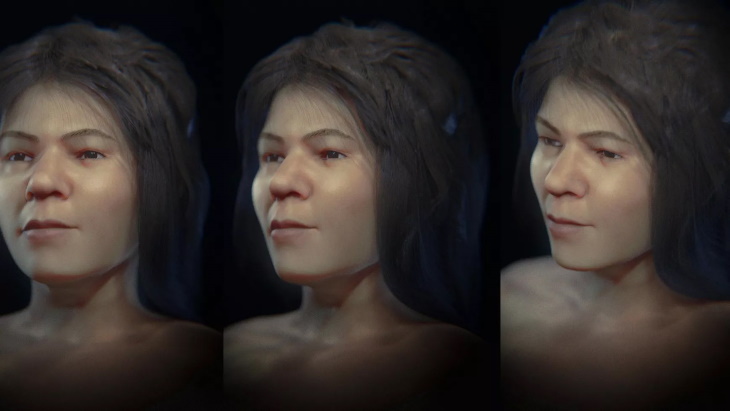
In 1881, one of the oldest human skulls was unearthed in a cave in Mladeč, now part of the Czech Republic. The 31,000-year-old skull was initially categorized as male, and it took 140 years to determine the true sex of the Stone Age remains. In actuality, the skull belonged to a 17-year-old female from the Upper Paleolithic (Aurignacian) period. Misgendering skeletal remains is very rare in paleontology, but it does happen occasionally.
Reconstructing the face of the Mladeč skull was no easy task, as the lower jaw was missing. Researchers used records from the 19th-century excavation, as well as data from modern human jaws modeled with CT scans to restore the jaw as faithfully as possible. You can see the results in the digitized restoration of the young woman’s face above.
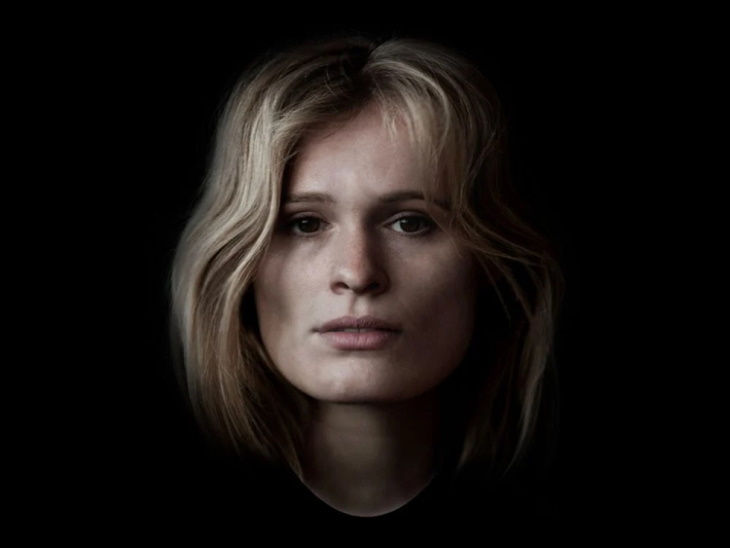
The Whithorn Priory and Museum is one of the first Christian settlements in Scotland. In 1957, an ancient crypt with remains that date back to the Middle Ages (12-14th century BC) was discovered on the premises. Over sixty years later, the nonprofit that runs the museum decided to show the faces of three Medieval Scots to "provide insights about the lives, nutrition, and the health of individuals from Scotland's ancient past," reports BBC News.
By far the most mysterious remains belonged to the young woman you see in the image. Her identity is unknown, but forensic craniofacial anthropologists say she was likely very beautiful. Chris Rynn, the expert who conducted the facial reconstruction recalls she “had the most symmetrical skull” he’s ever worked with.
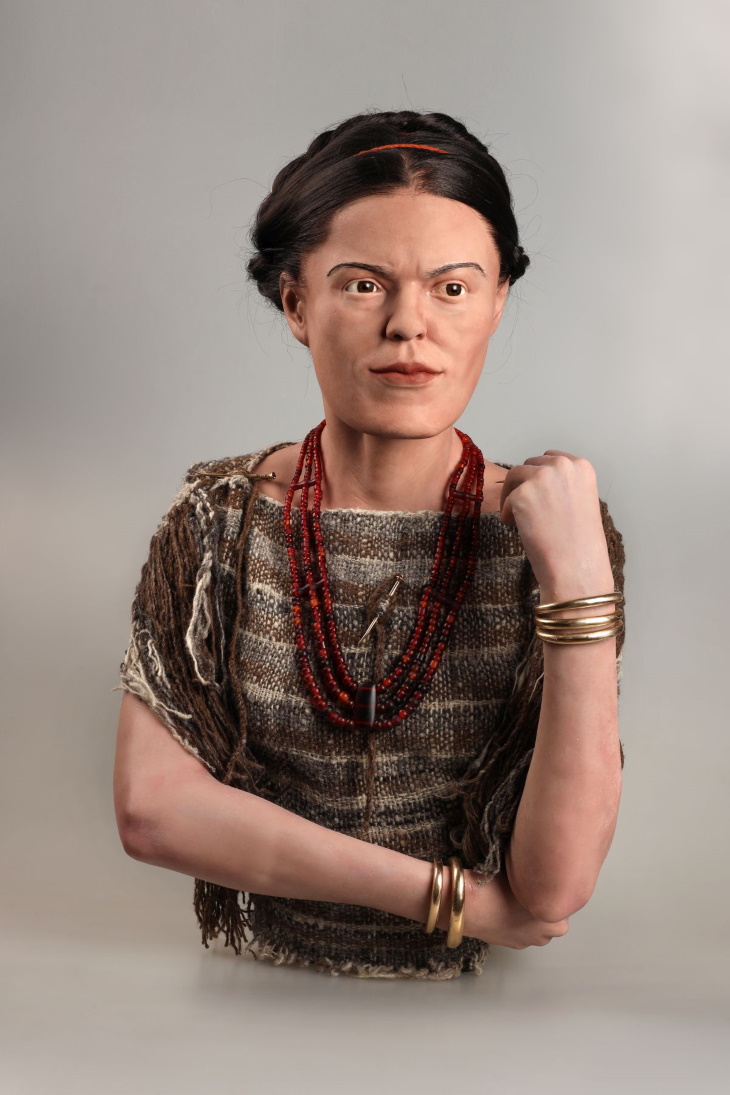
Image source: Archeology.com
The remains of a particularly wealthy woman were found in a family burial near Mikulovice, modern-day Czech Republic by the archaeologist Michal Ernée and his team from the Institute of Archaeology of the Academy of Sciences of the Czech Republic. The cemetery belongs to the Únětice culture, famous for its intricate metalwork.
Despite the fact that the woman’s bones date back to 1880-1750 BC, they were very well preserved. This gave scientists the ability to reconstruct the entire torso and use DNA testing to determine she was a petite woman with dark hair, brown eyes, and fair skin. The researchers were also able to recreate the woman’s intricate clothing and accessories. She was buried wearing gold earrings, five bronze bracelets, and a three-strand necklace made of 400 amber beads.

King Tut needs no introduction. The discovery of the boy pharaoh’s tomb is easily one of the biggest archeological finds of the past century, and his golden sarcophagus is the most famous Ancient Egyptian artifact in the world.
What about the boy behind the mask? Despite his sarcophagus projecting a visage of a strong and handsome young man, the 19-year-old Egyptian king was far from the paragon of health and beauty. Following a “virtual autopsy” that included thousands of digital body scans and genetic analysis, researchers generated a virtual model of Tutankhamun’s face and body.
This research revealed that the pharaoh was born with a misshapen skull, buckteeth, and a receding chin. The sickly boy-pharaoh also suffered from malaria, and epilepsy, and had malformed hips and a club foot that required him to walk with a cane. Lastly, the remains indicate that Tut had a broken leg and a skull fracture that were possibly sustained postmortem.
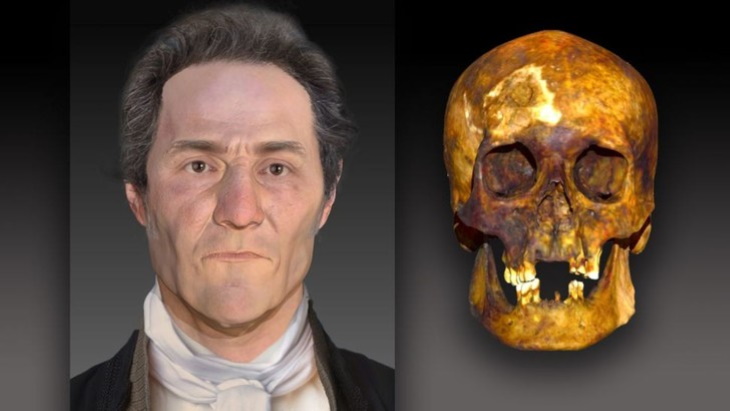
Burial practices can be heavily influenced by superstition, and this grave from the late 18th century is a great example of that. This man was buried in Griswold, Connecticut, in a highly unusual way. Prior to the burial, his femurs were placed in a crisscross position. There’s also evidence that, at some point, the body was exhumed and buried again. Both of these practices suggest that the man was believed to be a vampire.
As usual, the truth is more prosaic; tissue analysis suggests the 55-year-old died of tuberculosis. At the time, TB patients were often believed to be vampires, and the extra “precautions” made by locals to protect themselves from the undead further support it. DNA evidence was unable to confirm the man’s nefarious nonhuman ancestry, but it did reveal what he probably looked like. The male had dark hair, brown eyes, and fair skin with freckles (no fangs though).
Related article: These Reconstructed Faces of Ancient Figures Look So Real
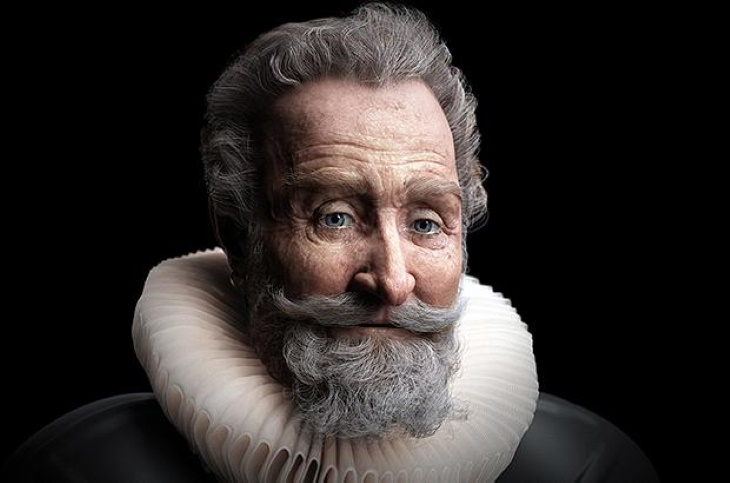
Unlike most French monarchs, King Henri IV didn’t lay his head to rest at The Basilica of Saint-Denis - even though his body is there. That’s because the head of the French monarch was separated from his body and lost. In 1793, French revolutionaries disinterred the king’s remains and threw them into a mass grave; when it was opened to retrieve Henri IV in 1817, his head was already missing.
To everyone’s surprise, the mummified head re-emerged in 2008. It was found in the attic of the retired Jacques Bellanger. The broken nose, features, age, and facial hair fit the description of Henri IV at his death in 1610. DNA evidence too seems to suggest that the head matches blood samples of Henri IV’s descendants, but not everyone believes that it belongs to the late king. The reconstruction of the head shows the French monarch before his passing.

Facial reconstruction now allows you to see the smiling face of a young Neanderthal man named "Krijn," who died between fifty and seventy thousand years ago. The paleo-anthropological artist Adrue Kennis restored Krijin’s face from a single piece of the skull. Of course, the artist considered previous research, including information about the eye color and facial shape, to complete the reconstruction.
Krijn lived in Doggerland, a territory between the UK and the Netherlands that is now under the North Sea. Fifty thousand years ago, the land was a frigid steppe full of reindeer, mammoths, woolly rhinoceroses, lions, and much other wildlife. The bust shows the Neanderthal with a cyst above the right browbone, another surprise finding made by researchers. This is an intradiploic epidermoid cyst, a type of tumor that’s mostly benign. Krijin was the first Neanderthal recorded to have this tumor.
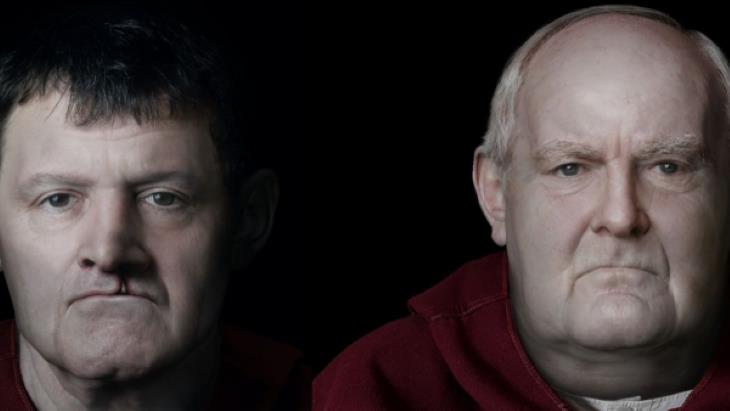
Remember the Medieval Scotswoman from the beginning of this article? Her remains were in the same crypt as these two men, one of whom was a priest and the other one was a bishop. You can see the facial reconstructions of both men above.
The priest’s remains are unidentified, and he was buried together with elites but without any funerary goods. The cleric also had a cleft lip and palate that made reconstruction quite challenging.
The bishop, on the other hand, was identified through radiocarbon dating, historical records, and artifacts as Bishop Walter. He presided over the Whithorn Priory from 1209 to 1235. Walter’s skeletal remains showed that Walter was obese. He was also buried in full dress, including a gold ring with emeralds and rubies.
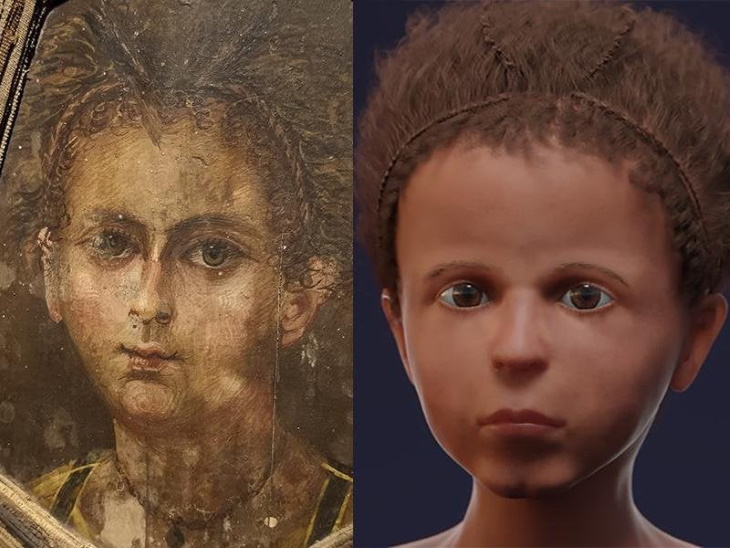
European scientists attempted to assess the accuracy of so-called mummy portraits. These were painting of the dearly departed attached to mummies – a popular Egyptian tradition in the 1st-3rd centuries AD.
To test this, the researchers took a CT scan of the mummy of a boy from circa 50 BC - 100 AD found near the pyramid of Hawara in Egypt. They combined the scans with existing X-rays of the mummy and created a digital 3D rendering of the child. The resulting image (right) looked nearly identical to the mummy portrait (left). The researchers point out the restored picture looked slightly younger than the painting, but other than that, it was a perfect match.
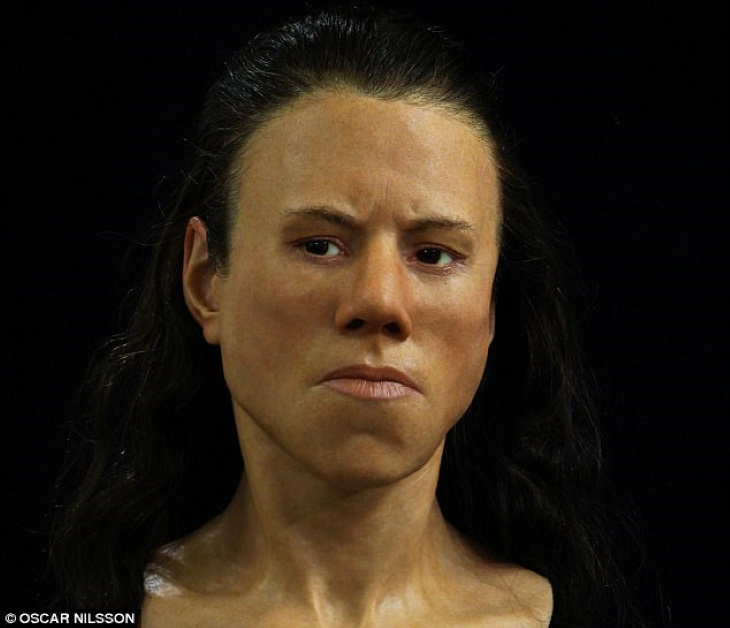
You’re looking at a reconstruction of a teenage girl from the Mesolithic (around 7,000 BC). Believe it or not, she was no older than 15-18 years when she perished in the Theopetra Cave. This cave in the Thessaly region of Greece was inhabited for as long as a hundred thousand years, and Avgi lived there at a time considered the dawn of civilization. In fact, even her name - Avgi - is Greek for Dawn.
Dawn’s remains were discovered in 1993, and more recently, the sculptor Oscar Nilsson was tasked with recreating her face. The Swedish sculptor spent over two hundred hours on restoring Avgi’s face on top of a silicone replica of her skull. Nilsson also concludes that people of the Mesolithic - both male and female - looked more masculine. “Having reconstructed a lot of Stone Age women and men, I think some facial features seem to have disappeared or "smoothed out" with time,” Nilsson was quoted by the Daily Mail.
The sculptor recreated the faces of many other ancient humans. View more of Oscar Nilsson’s lifelike restorations here - Artist Brings Ancient Skulls to Life
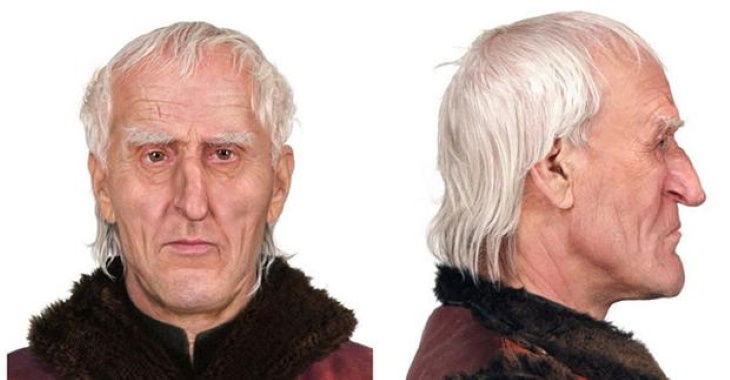
Largely unknown beyond the academic world, the Father of Astronomy Nicolaus Copernicus died at age 70 in 1543. His body was buried in an unmarked grave in Frombork, a town in northern Poland. It was centuries later - in 2010 - that Copernicus’ remains were found under the floor of the local Medieval cathedral and given a proper burial.
The DNA of the remains was compared to a few strands of hair left in one of Copernicus’ books. They ended up matching, and the Polish police completed a portrait of the famous astronomer in their forensic lab. You can even see his broken nose and the mark above the left eye.
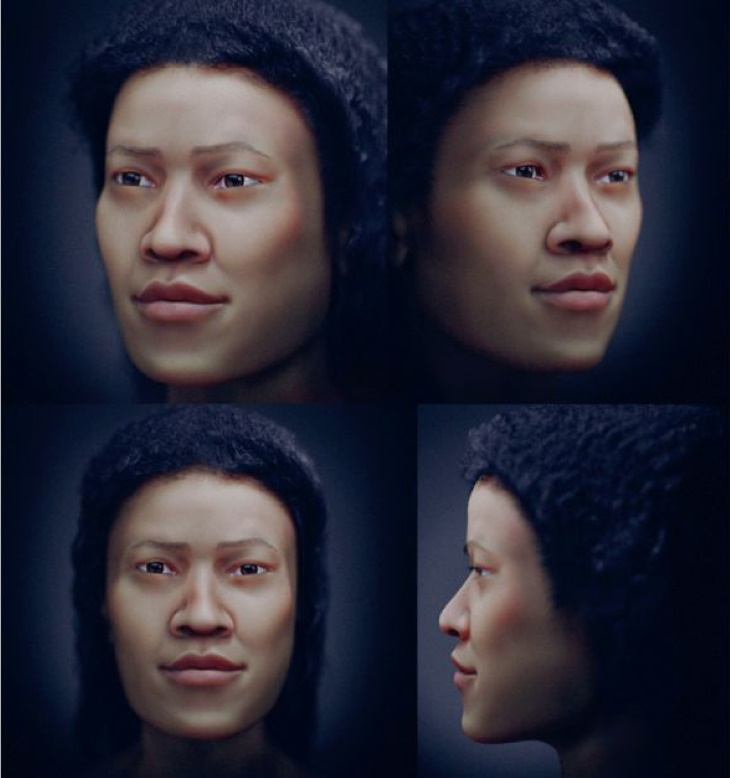
Meet the Penang Woman, the oldest Neolithic human in Malaysia. The skeletal remains are approximately 5,700 years old, and they were uncovered in Guar Kepah, the oldest archaeological site in the country. Ironically, the skeleton was found by accident during the construction of an Archaeological Gallery in Kepala Batas in 2017.
In 2022, researchers from Universiti Sains Malaysia (USM) generated a digital face reconstruction of the 40-year-old woman using a combination of CT scanning and 3D graphics. Her burial suggests that the Penang woman had an important societal standing, as her remains were surrounded by stone tools, pottery, and many types of shells.
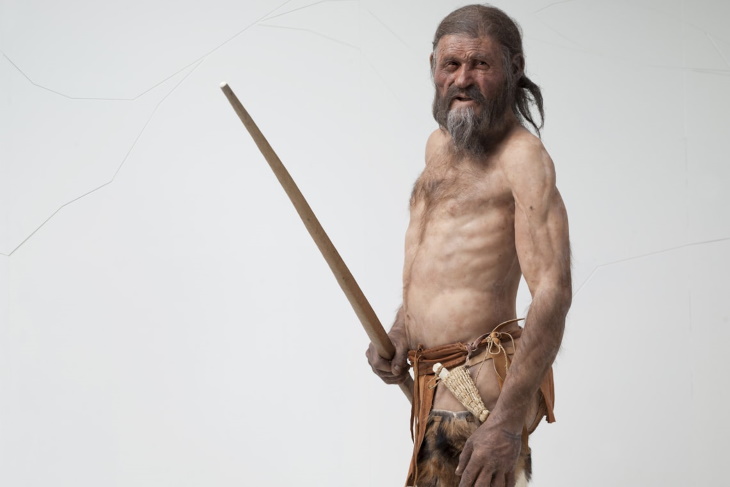
Here’s another face you may recognize. Ötzi the Iceman is an ancient celebrity who was discovered by hikers in the Ötztal Alps on the border between Austria and Italy. Frozen in ice, the European mummy perished at around 3,300 BC at age 45. And for the Copper Age, forty-five was quite a formidable age.
Thanks to the frigid temperatures in the Alps, Ötzi’s body was very well preserved. Not only were scientists able to restore his appearance with great accuracy, but they also managed to collect an extensive medical history. The 45-year-old man had fair but weathered hair and skin and deeply-set light eyes. He also had a long nose and beard.
Even though it was an arrow that caused his demise, Ötzi had many health problems, including worn joints, bad teeth, gallstones, and atherosclerosis. The 5,000-year-old man also had Lyme disease and bone loss caused by the infection.
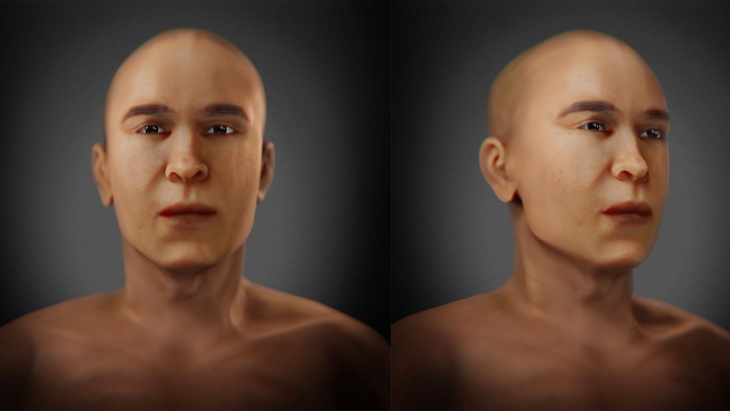
The mysterious remains known as KV 55 in Egypt’s Valley of the Kings may show the face of a pharaoh. Many researchers maintain these are the remains of Akhenaten, King Tutankhamun's father, who reigned from 1353-1335 BC. The mummified remains were located in 1907 in an undecorated tomb market by bricks with magic spells with Akhenaten's name. The burial is located a short distance from King Tut’s tomb.
There’s a reason why Akhenaten wouldn’t get a luxurious burial like his son too. Akhenaten was a complicated figure in Ancient Egyptian history, as he tried to bring monotheism to Egypt and failed. His first name was Amenhotep IV, but he changed it to Akhenaten, which means the Servant of Aten, the sun god. After his death, his name was erased from history, and his tomb was forgotten. Genetic analysis suggests that the man with the calm expression and regal features you see above is indeed King Tut’s father. However, it’s still difficult to conclusively state the mummy’s true identity.
References: Live Science, Museum Crush